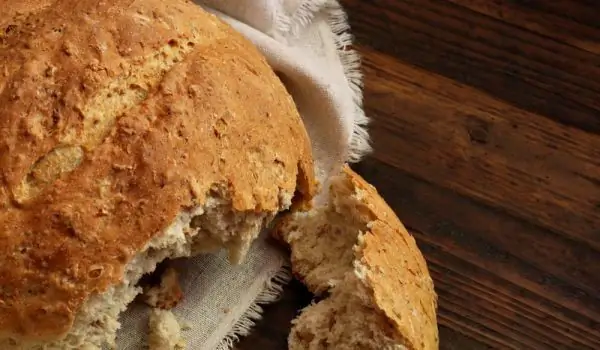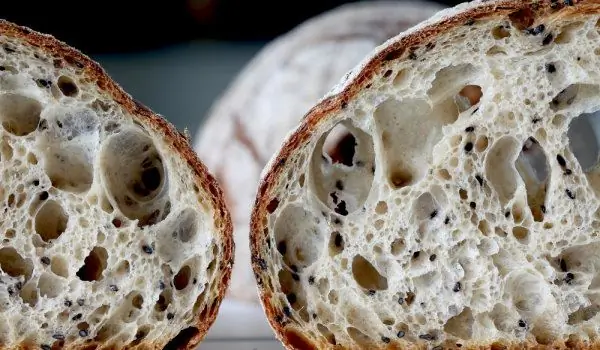2025 Author: Jasmine Walkman | [email protected]. Last modified: 2025-01-23 10:18
Natural yeast or so-called live yeast or yeast is a fermented mixture made from water and flour. This delicate substance is sensitive to the external environment and must therefore be stored well covered at room temperature. The recipe is about 4,000 years old and was discovered in ancient Egypt.
The principle is extremely simple: Mix water and flour and let it rest at room temperature. With the help of natural microorganisms in the air and natural fermentation processes, the yeast is filled with bubbles, and every three days it should be refreshed by adding equal amounts of water and flour. This mixture with bubbles smells more like beer, sauerkraut or vinegar, ie. has a sour aroma.
For 360 grams of live yeast you will need 180 grams of flour and 180 grams of lukewarm water. Mix them in a suitable container until a paste, then cover well. You can use foil for this purpose.

The ideal temperature for growing live yeast is about 25 degrees. After three days, feed the yeast with 4 tablespoons of water and 4 tablespoons of flour, stirring again and cover. In 6-7 days your live yeast is ready for use.
You can use the yeast prepared in this way in other recipes that use yeast, but the fermentation process is much longer.
Once you have prepared your live yeast, you can start kneading. To do this in a large bowl, mix the sourdough with 1 kg of flour, 1 tablespoon of salt and 850 grams of lukewarm water (about 25 degrees), mix with a spoon or hand until you get a soft dough.
Leave the dough to rise for about an hour and knead it again. Put it in a floured dish and cover it with a towel so that it does not dry out, this time leaving it for about 8 hours. Once the dough has rested, knead it again and place it in a greased pan to rise for the last time.
When the dough rises, turn on the oven and bake for about 40 minutes. If desired, you can spread it with beaten egg yolk or yoghurt before putting it in the oven.
Recommended:
Here's How To Make Healthy Live Bread (Rustic Sourdough Bread)

Bulgarians are one of the people who consume the most bread . Today it is difficult to find quality and tasty bread. The stores offer different types of pasta - wholemeal, multigrain, river bread, black, type, einkorn, vegetables, etc. In the factories where the bread is made, all kinds of improvers, preservatives, leavening agents and colorants are used.
How To Make Sourdough For Bread

To be make yeast for bread , you need to follow a few specific rules. First of all, pay attention to the vessel in which you will "grow" it. The most suitable is a standard jar of compote with a perforated metal cap. Then the flour - it is appropriate to start with rye or wholemeal.
Disgusting: A Live Rat Jumped Out Of A Pack Of Bread

A housewife from Pazardzhik was shocked after a live rat jumped out of the bread she had bought earlier from her husband. According to her husband Valentin Tsvetanov, the biggest mystery is actually how and when the disgusting rodent came across the bread.
Why Choose Sourdough Bread?

Is there healthy bread? What is yeast and why is it better than yeast ? Let's try to understand. Nutritionists have long dispelled the myths about the dangers of bakery products and are actively sharing information about which types of bread contain the least fast carbohydrates, which are particularly rich in B vitamins and healthy fiber.
Why Sourdough Bread Is Useful And How To Make It At Home

Today bread with yeast has become the most popular variety of pasta. It is most often offered by artisanal bakeries in countless varieties - wholemeal bread, bread with olives, spices, dried tomatoes. Its useful properties today are rather a fact that few people question, and rightly so.

